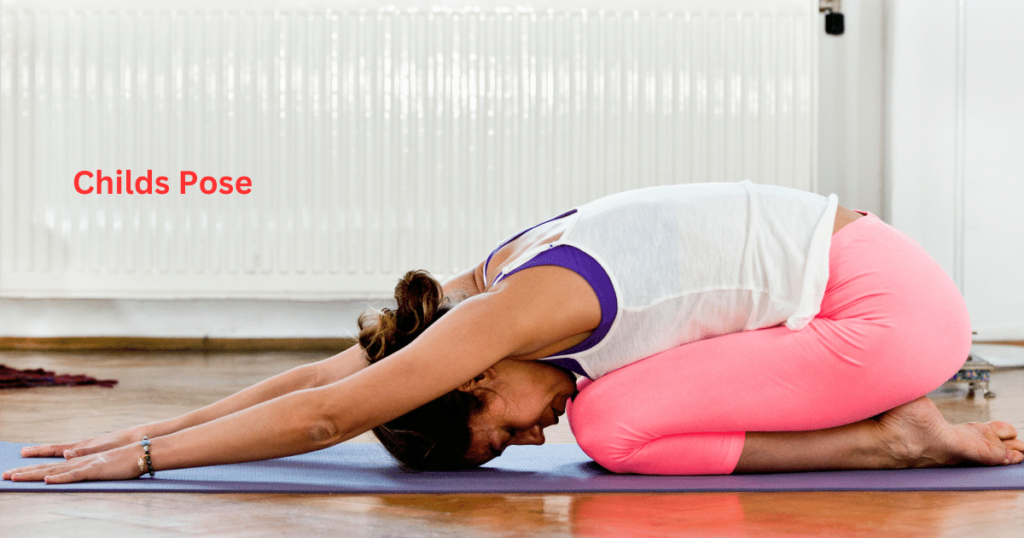Introduction
Vertigo, a common dizziness, creates a sensation of spinning or losing balance. Stemming from various conditions, primarily involving the inner ear or brain, vertigo can lead to nausea, headache, and instability. While traditional treatments play an essential part in managing vertigo, alternative therapies like Yoga are gaining attention for their potential benefits. This post aims to explore how one can use Yoga Therapy as a tool to manage vertigo.
Focusing on balance, flexibility, and relaxation, Yoga presents a unique approach to managing vertigo symptoms. Specific poses and breathing exercises can help stabilize the inner ear and improve focus, potentially reducing the frequency and severity of vertigo episodes. Poses such as the Mountain Pose (Tadasana), Tree Pose (Vrksasana), and Corpse Pose (Savasana) are recommended for their grounding and calming effects. However, it’s important to approach Yoga gently, starting with simple poses under the guidance of a qualified instructor, especially for individuals experiencing severe vertigo.
Understanding Vertigo and Balance Disorders
Vertigo is not a condition in itself; instead, it is primarily a symptom of varying underlying issues, often related to disorders in the inner ear’s vestibular apparatus that regulates balance. Conditions such as benign paroxysmal positional vertigo (BPPV), Meniere’s disease, and vestibular neuritis commonly cause vertigo. Central nervous system issues, like stroke or migraines, can also trigger vertigo symptoms.
Individuals experiencing vertigo typically describe it as feeling like they or their surroundings are spinning or moving. Such sensations can range from mild to severe and may be accompanied by other symptoms like nausea, vomiting, headache, and difficulty in maintaining balance. These symptoms can significantly interfere with daily activities, leading to challenges in performing work, enjoying leisure time, and even carrying out basic tasks. It is crucial for anyone experiencing persistent vertigo to seek medical advice, as accurate diagnosis and treatment can greatly improve quality of life.
Chronic vertigo can be debilitating, affecting the quality of life due to a persistent sense of unsteadiness, leading to falls and inhibiting routine activities. While medical treatments can help manage the condition, alternative, complementary approaches like Yoga are becoming more sought out for their holistic and harmonious approach to treatment.
Yoga, focusing on balance, flexibility, and stability, offers a natural and therapeutic method for individuals dealing with vertigo and balance disorders. Regular practice of specific yoga poses can enhance vestibular function and promote inner ear balance, significantly alleviating vertigo symptoms.
Movements that emphasize gentle stretching, coordinated breathing, and mindful concentration can help improve spatial awareness and reduce dizziness episodes. Practitioners often recommend the Mountain Pose for stability, the Tree Pose for balance, and the Corpse Pose for relaxation and stress relief. However, individuals must consult a healthcare provider before starting Yoga or any other complementary therapy to ensure it is safe and suitable for their health.
Yoga and A Holistic Approach to Health
Yoga, an ancient practice born in India, integrates mind, body, and spirit through physical postures known as asanas, breathing exercises known as pranayama, and meditation. It offers a path of holistic well-being, addressing the individual’s mental, physical, and spiritual health.
In today’s fast-paced world, where stress and anxiety have become commonplace, Yoga provides a sanctuary of calm and relaxation. Practicing Yoga regularly can significantly reduce stress levels, improve concentration, and foster a sense of inner peace. Furthermore, the physical aspects of Yoga, including the various asanas, help improve flexibility, balance, and overall body strength, making it a comprehensive fitness regimen. Not only does Yoga contribute to physical health, but it also enhances emotional resilience, helping practitioners to manage life’s ups and downs better.
The principles of Yoga go beyond fitness. It aims to cultivate balance in the body through developing strength and flexibility and in the mind through a focused awareness during practice. This holistic approach makes Yoga a potential complementary therapy for conditions like vertigo, which interlinks physical symptoms and mental well-being.
Beyond its physical and mental benefits, Yoga fosters a deep connection with the self and the surrounding environment, promoting mindfulness and present-moment awareness. This mindfulness can lead to healthier lifestyle choices, including an improved diet, more restful sleep, and overall life satisfaction.
Additionally, practicing Yoga in a community enhances social well-being by building connections, sharing experiences, and offering mutual support. Whether practiced in the tranquil solitude of one’s home or the communal energy of a class, Yoga is a powerful tool for personal transformation, guiding individuals on a path to a more balanced, harmonious life.
How Yoga Can Help with Vertigo
Yoga’s benefit for vertigo is enhancing balance, reducing stress, and improving focus. In particular, Yoga poses that foster balance can help train the body’s proprioception, the sense of the relative position of one’s body parts and strength of effort in movement, and the nervous system to function better, even when vertigo symptoms strike.
Among the most beneficial yoga poses for those experiencing vertigo are the Tree Pose (Vrksasana) and the Warrior III Pose (Virabhadrasana III). These poses focus on developing core strength and leg stability, which are crucial for maintaining balance. Additionally, practices such as the Corpse Pose (Savasana), with deep breathing exercises, can significantly reduce stress levels, a common trigger for vertigo episodes. Individuals must approach these exercises gently and within their comfort zone, especially when symptoms are present.
Deep breathing or pranayama exercises practiced in Yoga can also incite calmness and stress reduction, often intensifying vertigo symptoms. Additionally, during yoga practice, the emphasis on mindfulness can help individuals with vertigo concentrate and manage symptoms better.
It’s essential for those incorporating Yoga as a therapeutic tool for vertigo to start slowly, choosing gentle poses and gradually progressing as their body allows. Engaging in Yoga under the guidance of a qualified instructor aware of their condition can offer personalized modifications to ensure safety and effectiveness.
Furthermore, consistency in practice can lead to more significant improvements over time, not just in managing vertigo symptoms but also in overall well-being. Like any holistic approach to health, combining Yoga with traditional medical treatments provides a comprehensive strategy addressing vertigo’s multifaceted nature.
Yoga Postures that Can Help Alleviate Vertigo Symptoms
Embracing Yoga to supplement the management of vertigo starts with simple, grounding poses. It’s important to begin slowly, ensuring comfort with each pose before moving to a more challenging asana. Here are a few to consider:
Mountain Pose (Tadasana): This basic standing pose helps improve balance, posture, and awareness, providing a strong foundation for other yoga poses.

Child’s Pose (Balasana): As a gentle stretch for the back, hips, thighs, and ankles, Child’s Pose also offers a calming effect on the brain, relieving stress and fatigue. It’s especially beneficial during dizziness and vertigo episodes, as it supports the head and lowers the center of gravity.

Corpse Pose (Savasana): Though it may seem simple, it is powerful for mental relaxation and stress relief. Lying on the back with arms and legs comfortably spread apart allows the body to surrender to gravity fully, promoting complete relaxation. This pose is particularly effective at the end of a yoga session to integrate the preceding poses’ benefits and alleviate symptoms of vertigo by calming the nervous system.
Downward-Facing Dog (Adho Mukha Svanasana): This pose, while slightly more challenging, strengthens the entire body with a focus on the shoulders, arms, and legs. It also increases blood flow to the brain, which can benefit those experiencing vertigo by promoting improved circulation and balance. Start in a tabletop position and gently lift the hips up and back, forming an inverted V shape with the body. This pose should be cautiously approached by beginners or those experiencing severe vertigo symptoms.
Tree Pose (Vrikshasana): A gentle balance pose helps strengthen the legs, improve body balance, and instill discipline and concentration—important skills for coping with vertigo symptoms. To practice the Tree Pose (Vrikshasana), start by standing in Mountain Pose with your feet hip-width apart, distributing your weight evenly. Carefully shift your weight onto your left foot, lifting your right foot off the floor. Place the sole of your right foot on the inner thigh of your left leg, keeping your toes pointing downward. Ensure your hips are aligned and facing forward.
Bring your palms together in front of your chest in a prayer position, or raise your arms over your head for a more challenging variation. Focus your gaze on a fixed point in front of you to maintain balance. Hold this position for 30 seconds to 1 minute, breathing deeply and evenly. Repeat on the opposite leg. Tree Pose aids in improving focus, stability, and balance while strengthening the thighs, calves, ankles, and spine.
Please consult a physical therapist or qualified yoga instructor to know the exact posture and form of these asanas, and do not strain yourself while doing them.
Creating a Consistent Yoga Routine for Vertigo Management
As with any exercise, consistency is important in Yoga, especially when managing a condition such as vertigo. Gradually and responsibly increasing the duration and intensity of your yoga practice can have increasing benefits. But patience is key. Progress may be slow, but with regular practice, it will happen.
Pay close attention to your body during each pose. If any yoga pose triggers vertigo symptoms or feels uncomfortable, backtrack into a more comfortable position or opt for a restorative pose, such as the Child’s Pose. Practicing in a safe space where a fall risk is minimal is also essential, such as a carpeted space or next to a sturdy, waist-high piece of furniture that can provide support if needed.
Integrating Yoga into a Comprehensive Vertigo Treatment Plan
Integrating Yoga into a Comprehensive Vertigo Treatment Plan can be incredibly beneficial for individuals experiencing vertigo symptoms. This ancient practice has improved balance, reduced stress and anxiety, and increased overall well-being.
Viewing Yoga Therapy as a counterpart, not a replacement for traditional vertigo treatments, is crucial. Before starting on yoga exercises, you must seek advice from your healthcare provider to ensure the safety and effectiveness of these exercises for your specific situation.
They can provide vital insights about precautions you should take and help you monitor your progress over time, making alterations as needed. You can integrate Yoga with other forms of treatments, like medication, rehab, and other therapy forms, to create a comprehensive treatment plan for managing vertigo.
Conclusion
While Yoga doesn’t cure vertigo magically, it can undoubtedly equip individuals to manage their vertigo symptoms better and boost their overall quality of life. The balance, serenity, and improved focus that Yoga promotes can help you navigate the world more safely and confidently, even amidst vertigo symptoms. So, try this ancient practice, and remember to be patient with yourself – progress comes with time.
Pay close attention to your body during each pose. If any yoga pose triggers vertigo symptoms or feels uncomfortable, backtrack into a more comfortable position or opt for a restorative pose, such as the Child’s Pose. Practicing in a safe space where a fall risk is minimal is also essential, such as a carpeted space or next to a sturdy, waist-high piece of furniture that can provide support if needed.



